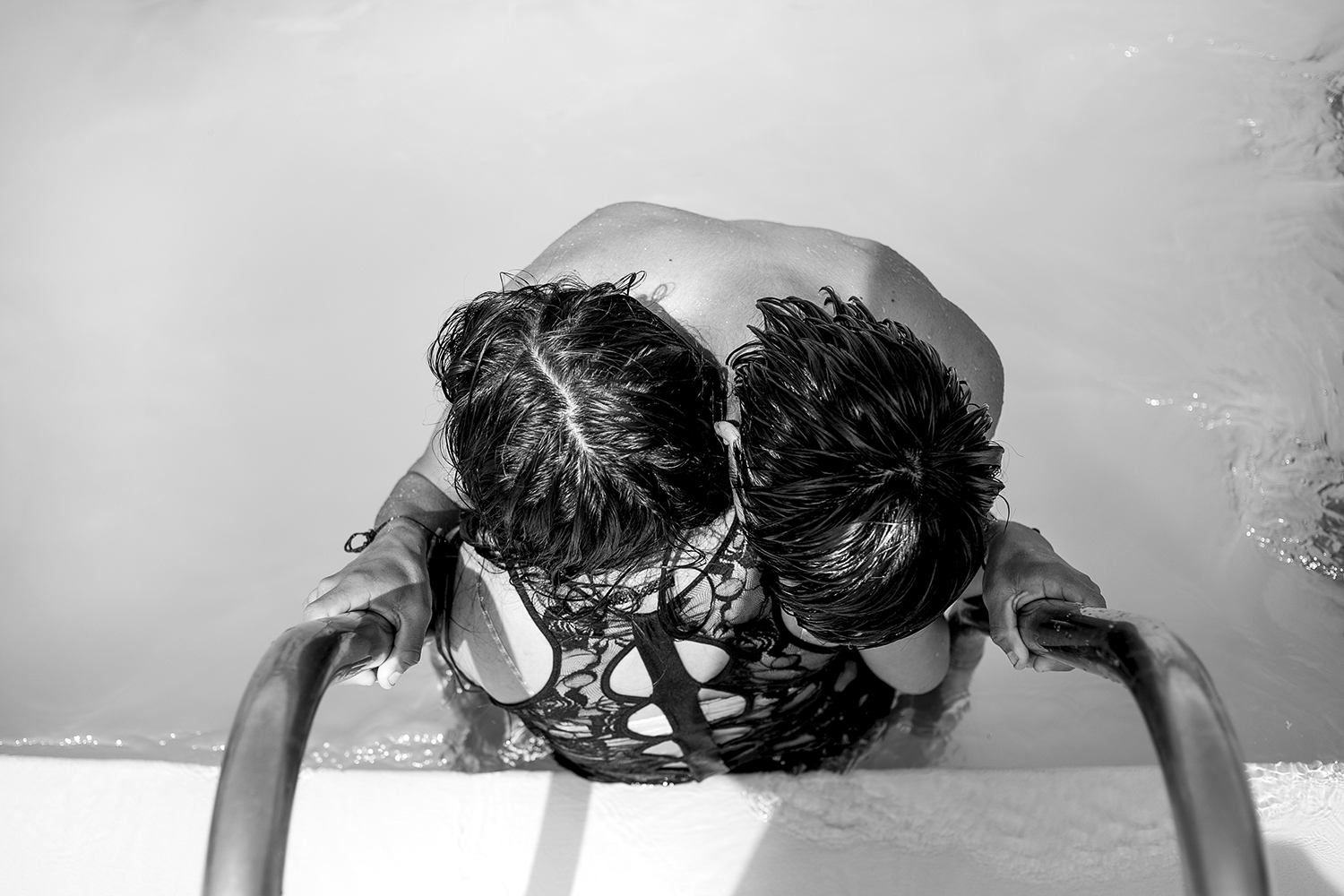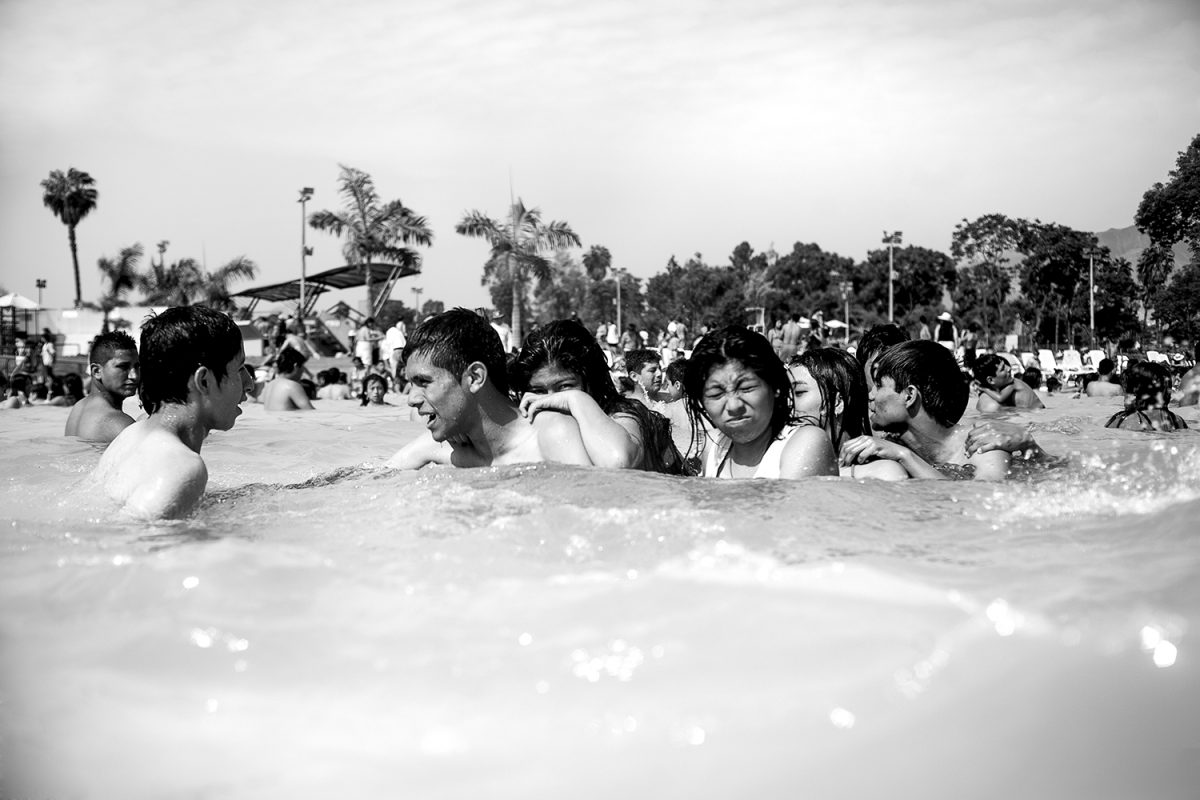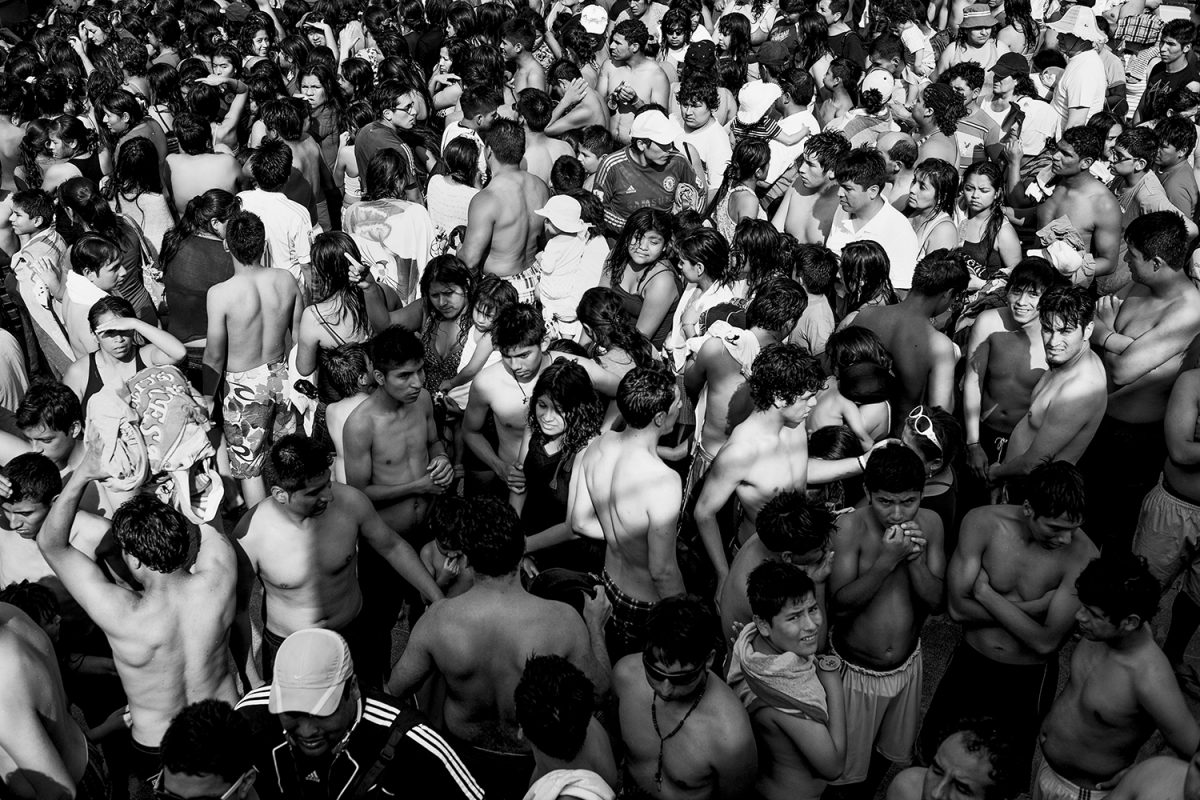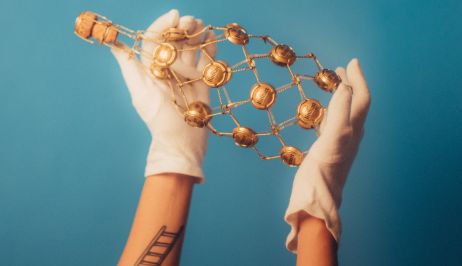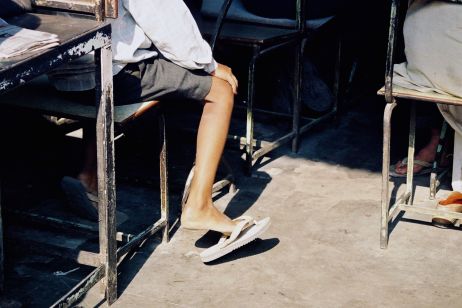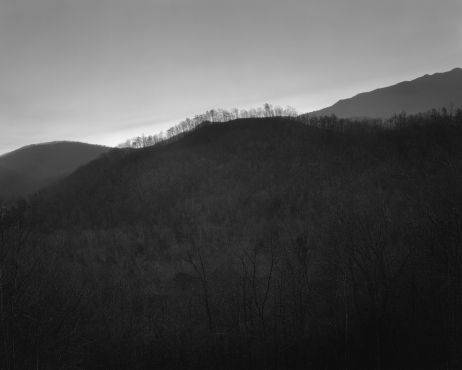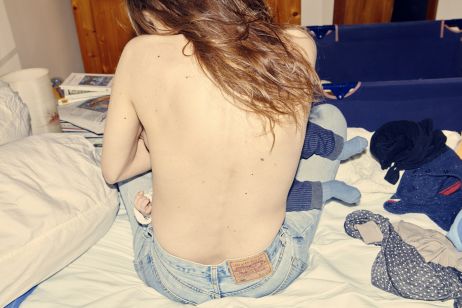Rochi Léon, a young Peruvian photographer, portrays the extroverted beauty of the familiar mob that crowds the popular pools of Lima.
For the Peruvian working class, these oases of water and chlorine are the only escape from the muggy summer days in Lima. The most crowded and popular neighborhoods don’t have an easy access to the beaches because of poor public transport, and large concrete public pools emerged as a response to the people’s need to cool down. Léon’s subjects know that neither the pools nor the photographer hold any judgment over them, their bodies, or their offhand gratification. A waterproof case helped her camera go unnoticed, and kept people’s spontaneity intact.
Despite portraying a mass phenomenon, Léon’s series manages to be extremely intimate. “In such crowded spaces, one may think that intimacy or privacy are non-existent,” the photographer tells us, “But when people are in the water, they get in touch with their most primitive selves. Even if they are sharing these pools with hundreds of people, once immersed in the water they can avoid any sound, no matter how loud it may be.” Once out of the water, people in Léon’s series don’t look at each other, they all embrace the individuality of this mutual moment of enjoyment.“This happens, in part, because they are equals. It doesn’t matter how you look, what you wear, or where you come from.” She says this attitude is much rarer in upper-class beaches or pools.
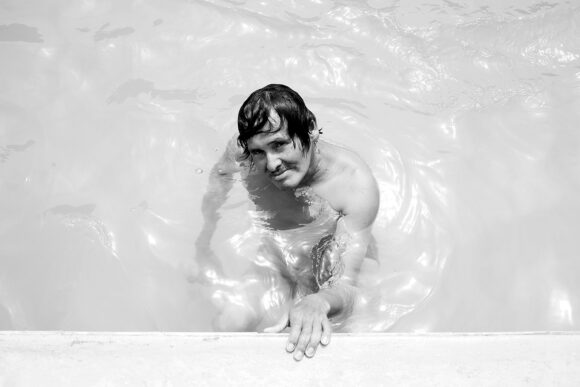
At such huge demand public pools are the desired oasis for thousands of people who intend to fight the excesive heat of an exhausted city.
People from all ages, in family or with friends, enjoy these various liters of water and chlorine, while in the back a famous cumbia music is playing.
It’s here where any awkward imperfection one believe may have is forgotten. The water accepts the asymmetry and conceals with its waves any particular feature that may differentiate one from another.
These spaces don’t allow judgements, homogenizing in the undress and vulnerabilty, gathering everyone, pairing the differences, universalizing the singular and referring us to the most fundamental principle: in this waters we are all the same.
*These photographs were taken in different public pools located in: Comas, Huachipa, Puente Piedra, all districts located in Lima, Perú*
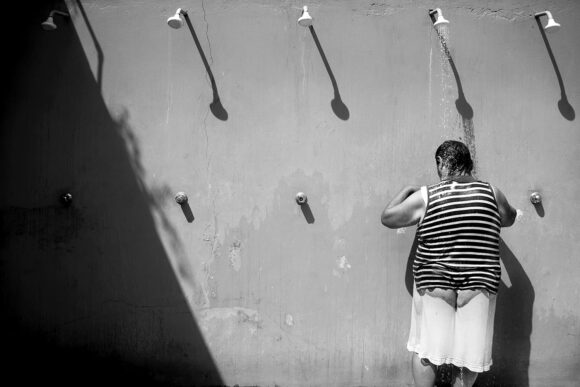
At such huge demand public pools are the desired oasis for thousands of people who intend to fight the excesive heat of an exhausted city.
People from all ages, in family or with friends, enjoy these various liters of water and chlorine, while in the back a famous cumbia music is playing.
It’s here where any awkward imperfection one believe may have is forgotten. The water accepts the asymmetry and conceals with its waves any particular feature that may differentiate one from another.
These spaces don’t allow judgements, homogenizing in the undress and vulnerabilty, gathering everyone, pairing the differences, universalizing the singular and referring us to the most fundamental principle: in this waters we are all the same.
*These photographs were taken in different public pools located in: Comas, Huachipa, Puente Piedra, all districts located in Lima, Perú*
A strong social message
Indeed, Léon’s work has a very strong social angle. The use of black and white, which she chose in post-production, emphasizes how people are and feel equal at the pools. “The thing was that in color one might pay more attention to the clothes people were using (not always a swimsuit), the color of the water (that in some cases might not be too clean) or relate the spaces or the people to a certain social/economic status.” And this is exactly what she wanted to avoid.
The humane way of rendering social equality issues and asymmetry of opportunities is the trademark of Léon’s photography. Her new series “Pachangara” focuses on the hard work of women in rural communities and advocates for their opportunities and rights.“I want my work to provide people with the vision and the voice that they need in a country where, sadly, people are discriminated against and marginalized due to their economic status, skin color, sexual orientation, or any other reason that society/the state sees fit”.
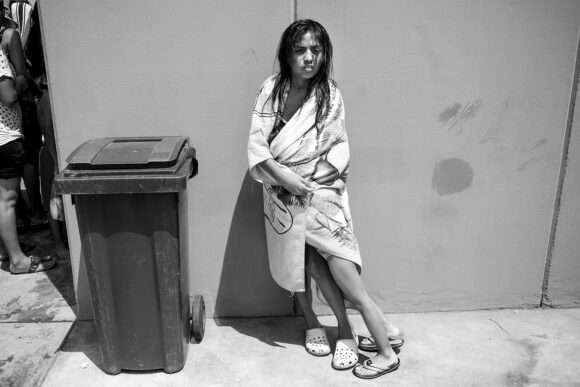
At such huge demand public pools are the desired oasis for thousands of people who intend to fight the excesive heat of an exhausted city.
People from all ages, in family or with friends, enjoy these various liters of water and chlorine, while in the back a famous cumbia music is playing.
It’s here where any awkward imperfection one believe may have is forgotten. The water accepts the asymmetry and conceals with its waves any particular feature that may differentiate one from another.
These spaces don’t allow judgements, homogenizing in the undress and vulnerabilty, gathering everyone, pairing the differences, universalizing the singular and referring us to the most fundamental principle: in this waters we are all the same.
*These photographs were taken in different public pools located in: Comas, Huachipa, Puente Piedra, all districts located in Lima, Perú*
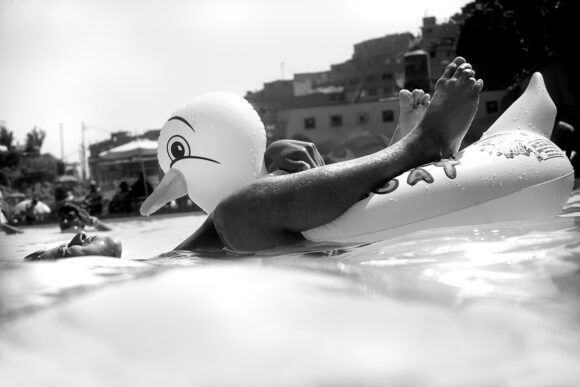
At such huge demand public pools are the desired oasis for thousands of people who intend to fight the excesive heat of an exhausted city.
People from all ages, in family or with friends, enjoy these various liters of water and chlorine, while in the back a famous cumbia music is playing.
It’s here where any awkward imperfection one believe may have is forgotten. The water accepts the asymmetry and conceals with its waves any particular feature that may differentiate one from another.
These spaces don’t allow judgements, homogenizing in the undress and vulnerabilty, gathering everyone, pairing the differences, universalizing the singular and referring us to the most fundamental principle: in this waters we are all the same.
*These photographs were taken in different public pools located in: Comas, Huachipa, Puente Piedra, all districts located in Lima, Perú*

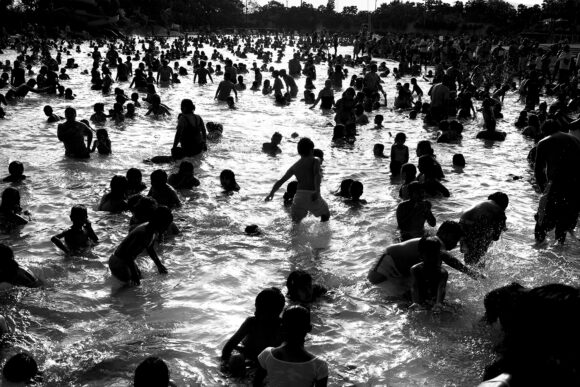
At such huge demand public pools are the desired oasis for thousands of people who intend to fight the excesive heat of an exhausted city.
People from all ages, in family or with friends, enjoy these various liters of water and chlorine, while in the back a famous cumbia music is playing.
It’s here where any awkward imperfection one believe may have is forgotten. The water accepts the asymmetry and conceals with its waves any particular feature that may differentiate one from another.
These spaces don’t allow judgements, homogenizing in the undress and vulnerabilty, gathering everyone, pairing the differences, universalizing the singular and referring us to the most fundamental principle: in this waters we are all the same.
*These photographs were taken in different public pools located in: Comas, Huachipa, Puente Piedra, all districts located in Lima, Perú*
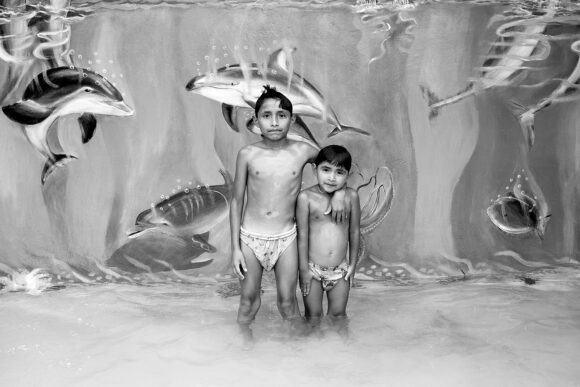
At such huge demand public pools are the desired oasis for thousands of people who intend to fight the excesive heat of an exhausted city.
People from all ages, in family or with friends, enjoy these various liters of water and chlorine, while in the back a famous cumbia music is playing.
It’s here where any awkward imperfection one believe may have is forgotten. The water accepts the asymmetry and conceals with its waves any particular feature that may differentiate one from another.
These spaces don’t allow judgements, homogenizing in the undress and vulnerabilty, gathering everyone, pairing the differences, universalizing the singular and referring us to the most fundamental principle: in this waters we are all the same.
*These photographs were taken in different public pools located in: Comas, Huachipa, Puente Piedra, all districts located in Lima, Perú*
Images by © Rochi León
